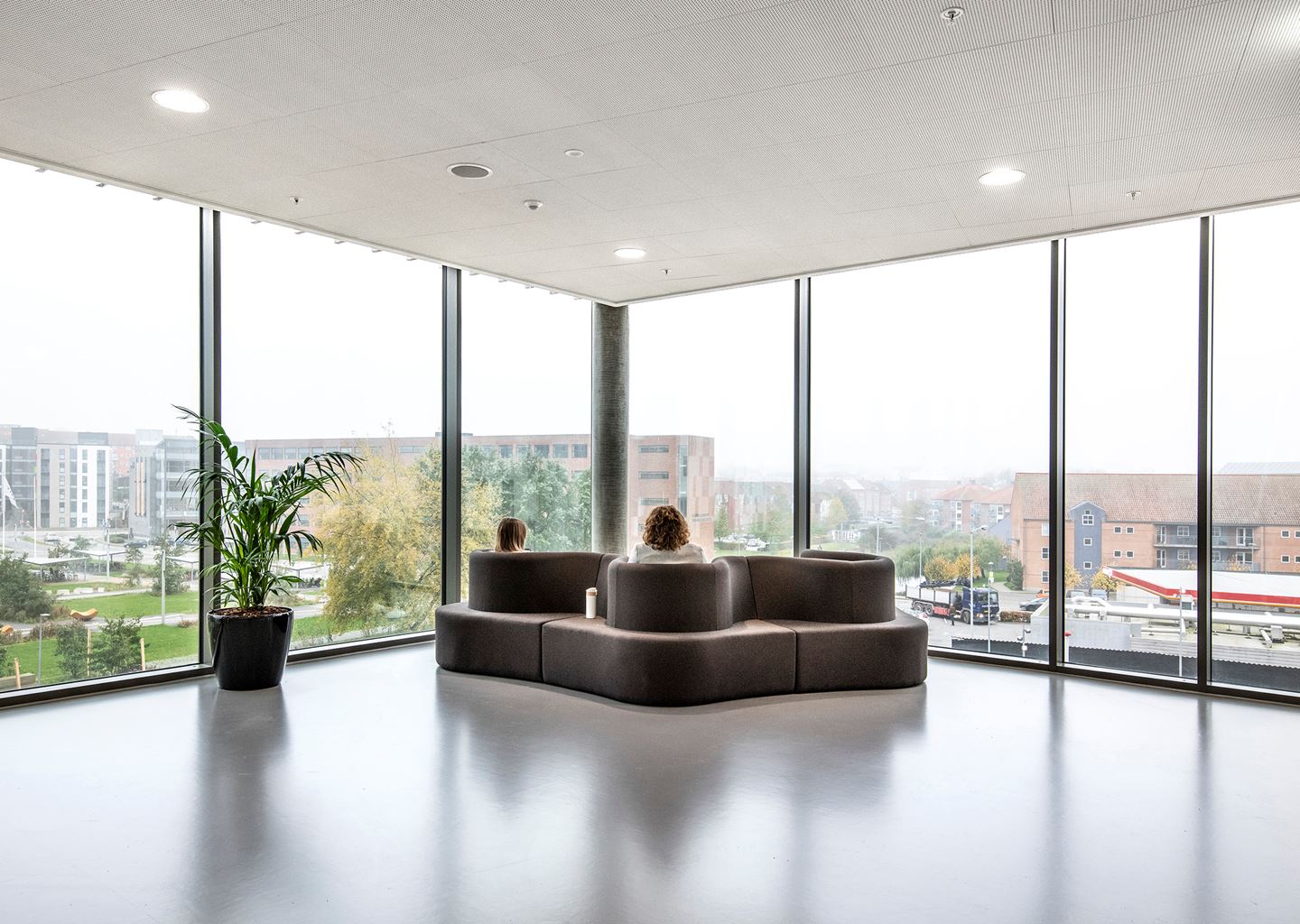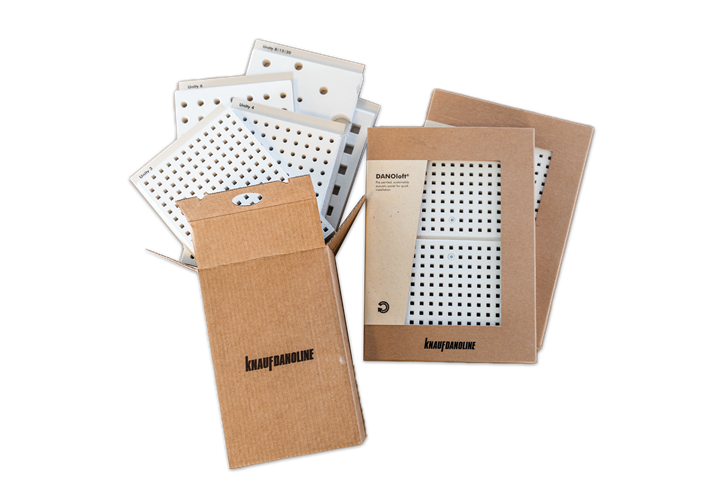When we think of modern interior architecture, we imagine large open spaces with high ceilings, concrete walls and glass partitions with little furniture. The open floor plan is still among the most popular designs, especially in workplaces, but it causes acoustic challenges. With fewer surfaces to absorb it, the sound echoes and reverberates around the office space uncontrolled. Architects are tasked with finding creative solutions because a poor acoustic design with limited sound absorption and reflection qualities can seriously affect employee focus and productivity. What are big beautiful spaces worth if they are impossible to work in?
The Sound of Focus: How Acoustic Design Affects Productivity in Schools and Offices

Noise slows productivity
Closer and faster employee communication is one of the main reasons the open concept design is so prevalent in offices. No walls equal no restrictions to approach someone at any time of day or have a quick brainstorming session. Yet while collaboration among employees gets a boost, ability to focus can suffer, especially if the acoustic design of the building is lacking.
Noise is one of the most common acoustic distractions at work. 79% of office workers report that noise makes it hard to concentrate. People are chatting around, the air vents are humming, or the sales team is having a heated discussion in a poorly soundproofed conference room. Different irritating sounds can distract or overwhelm employees and make them unable to focus on their tasks resulting in reduced productivity.
How acoustics affect learning
Anyone can attest to how difficult it is to work or study in a place with poor acoustics. In schools, noise hinders students' learning and disrupts teachers' workflow. Contemporary education is discussion-based, full of interaction between teachers and students. The acoustic materials in the classrooms need to absorb, carry and reflect sound simultaneously, making the acoustic design even more complex.
Schools are considered noisy spaces, so the focus is naturally put towards powerful sound absorbers. All the children in the classroom must hear the teacher, no matter where they are seated. But if the room's acoustic design features a heavily-absorbing ceiling, the teacher will have to strain her voice to reach everyone.
The best solution, in this case, would be to place absorbers with moderate absorption in the ceiling and add absorbers to the back wall to minimise reflections. Good acoustics are defined by our listening comfort and ability to understand the spoken word.

The Sound of Life: learn more about acoustic design
In this ebook, you can dive deeper into how acoustics affect our everyday lives no matter where we spend our time: at home, at work or at school. Learn how important it is to consider the acoustic properties of the materials you choose to install, and how you can ensure the optimal design from the beginning of the design phase.
The prerequisites for optimal acoustic design
Collaborative workspaces should not come at the cost of productivity. A visually stunning building that is impossible to work in is an unwanted scenario for any organisation. The impact of poor acoustics may start with a lack of focus but end with increased stress levels and severe health issues. Noisy work environments make employees more susceptible to anxiety, migraines or hypertension.
The balance between collaborative and disruptive is delicate. Therefore, acoustic architecture has the tough goal of creating a welcoming acoustic environment whilst supporting employee communication. The right acoustic materials can help address acoustic shortfalls in buildings.
For example, acoustic ceilings or walls made from perforated gypsum work to absorb, reflect and diffuse sound simultaneously. The diverse set of acoustic properties helps limit excessive noise but maintains speech privacy. With the added benefit of air purification qualities, perforated gypsum provides comprehensive acoustic comfort, which means that the building is pleasant to be in, there is an excellent indoor climate, and employees can focus on their tasks.
Acoustic ceilings and walls work great in schools. In fact, acoustic gypsum ceilings have been shown to improve students’ ability to identify words correctly by up to 35%.
Creating a welcoming acoustic environment at Victoria International School in Sharjah
Victoria International School in Sharjah (VISS), United Arab Emirates, is an international educational institution with a blend of Australian, International and UAE Ministry curriculums.
The school is committed to developing leaders who aspire to change the world and lifelong learners who continue to challenge the status quo. VISS built a brand-new campus and achieved its acoustic goals with Knauf DANOLINE's acoustic ceilings and walls made from perforated gypsum.
The challenge: Needed a versatile acoustic material
VISS is located in a large building with many wide spaces and classrooms. The architects behind the school’s architectural design, QHC Architects & Engineers, were looking for an acoustic solution that would not only effectively control sound in different rooms but also be environmentally friendly and aesthetically pleasing.
The acoustic material had to be flexible and versatile to complement the existing school’s design. The architects wanted a uniform, vibrant material that would quickly transform into desired shapes. In classrooms, the teacher’s voice had to be amplified, but the noise in the common areas subdued.
The solution: Acoustic ceilings and walls throughout the school
To achieve the ambitious acoustic design goals, QHC Architects & Engineers used most of Knauf DANOLINE acoustic product portfolio - combining beautiful aesthetic design with functional acoustic ceiling and wall solutions.
Designpanel with Quadril perforation was chosen as the acoustic ceiling and wall lining at the entrance and other large common areas. In the corridors, Designpanel cut in random circular patterns was installed together with plain gypsum ceilings.
The classrooms were equipped with 600x600mm demountable acoustic ceiling tiles with Unity 8/15/20 perforation, while 600x1200mm Contrapanel acoustic panels were installed in the auditorium as screw-fixed ceiling and wall lining.
In each room at the school, the architects have played around with different acoustic shapes and patterns, perfectly displaying the endless possibilities of acoustic gypsum boards. The whole acoustic design of the school is based on gypsum.

Order a sample and feel the quality
If you want to see, touch, and try out our Danoline products, you can order a product sample here. All our ceilings and walls are sustainable, certified and easy to install.
The result: A vibrant and effective acoustic design
VISS has a visually stunning and effective acoustic design that integrates seamlessly and complements the existing interior. Using perforated gypsum from Knauf DANOLINE, the architects created a beautiful, welcoming acoustic environment for teachers and students.
Why perforated gypsum is a good fit for offices and schools
Students spend up to 20% of their waking hours in school. So it is vital that classrooms have healthy, pleasant environments that make studying and learning as effective and comfortable as possible. The same goes for offices.
Perforated gypsum is a clean, acoustic material with no risk of pollution, making it a great fit to improve acoustic performance in schools and offices. The versatility and flexibility of gypsum allow for design experimentation and creative solutions to support unique architectural design ideas.
Most importantly, perforated gypsum supports sound absorption and diffusion in all sound frequencies. Creating acoustic comfort is about removing disturbing noise and ensuring that the critical sound is spread out into the entire room in a natural, effortless way with no adverse effect to focus and productivity.

Our local consultants are ready to help you
Do you want to know more about the design possibilities and the acoustical properties of our products? Get in touch, and our local Area Sales Manager will help guide you and answer any questions you might have.




